I recently went on a trip to all the Baltic Capitals: Vilnius, Riga and Tallinn.
Each of these capital cities has their own charms, and honestly I’d recommend visiting all three on a wider Baltic trip if you can.
But, of course, that’s not possible for everyone. If you just have time to visit one capital, here’s a breakdown of which is best for what!
Vilnius, Riga and Tallinn: which is best?
Best is very subjective – I do think that all three cities are worth visiting and had things I liked about all of them, BUT my personal favourite was Vilnius.
Let’s dig into why, and the top reasons to visit all three capitals!
Which Baltic capital to visit (Riga, Vilnius or Tallinn)?
My personal overall favourite was Vilnius, but each city has its draws and reasons to visit.
Here are a few categories and the winner for each!
Prettiest – Tallinn

All three capitals are pretty, but Tallinn just about swung it for me with its charming UNESCO Old Town, with streets dating back to the 13th century and mesmerising vistas from its lookouts.
As you wander through its cobblestone streets, you’re transported to a bygone era.
Each turn unveils architectural marvels, from medieval merchant houses to ancient churches, all meticulously preserved.
By climbing to Tallinn’s lookouts, you’ll see what I mean about its beauty.
These vantage points reward you with breathtaking panoramas of the cityscape.
The view from Toompea Hill, for instance, boasts a stunning perspective of Tallinn’s skyline, dominated by Gothic spires and red-tiled roofs and contrasted against the modern city stretching beyond the medieval walls.
Best Christmas Market – Riga
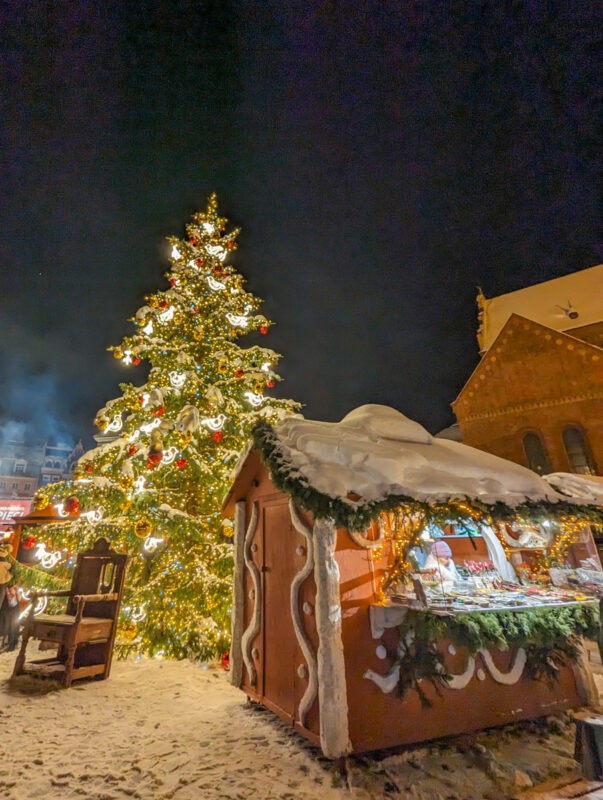
Tallinn’s is often voted the best, but Riga’s was standout the best for me, in terms of atmosphere, aesthetics offerings, food and price! It literally felt like I’d stumbled upon Santa’s secret village.
Set against the backdrop of Riga’s historic architecture, the Christmas market here is a kaleidoscope of festive joy, combining an unmatched atmosphere with aesthetic beauty.
The moment I stepped into Riga’s Dome Cathedral Square, here I was enveloped in Christmas cheer, as the market sparkled with thousands of twinkling lights that bounced off the snow.
At the centre of the market sat a huge Chrsitmas tree (Latvia and Estonia both claim to have had the first!) and beneath it, a gingerbread-style house selling traditional sweets.
Discover traditional Latvian Christmas presents, or try some of its mouthwatering food. I had two portions of potato and cheese pelmeni (dumplings), one regular mulled wine and one gingerbread-infused mulled wine.
I also spotted Latvian BBQ and Georgian food stands!
Many of the stalls are self contained in heated cabins, so you can browse for gifts (or enjoy a drink) in the warm, while taking in the magnificent Christmas market scene outside.
Cheapest – Vilnius
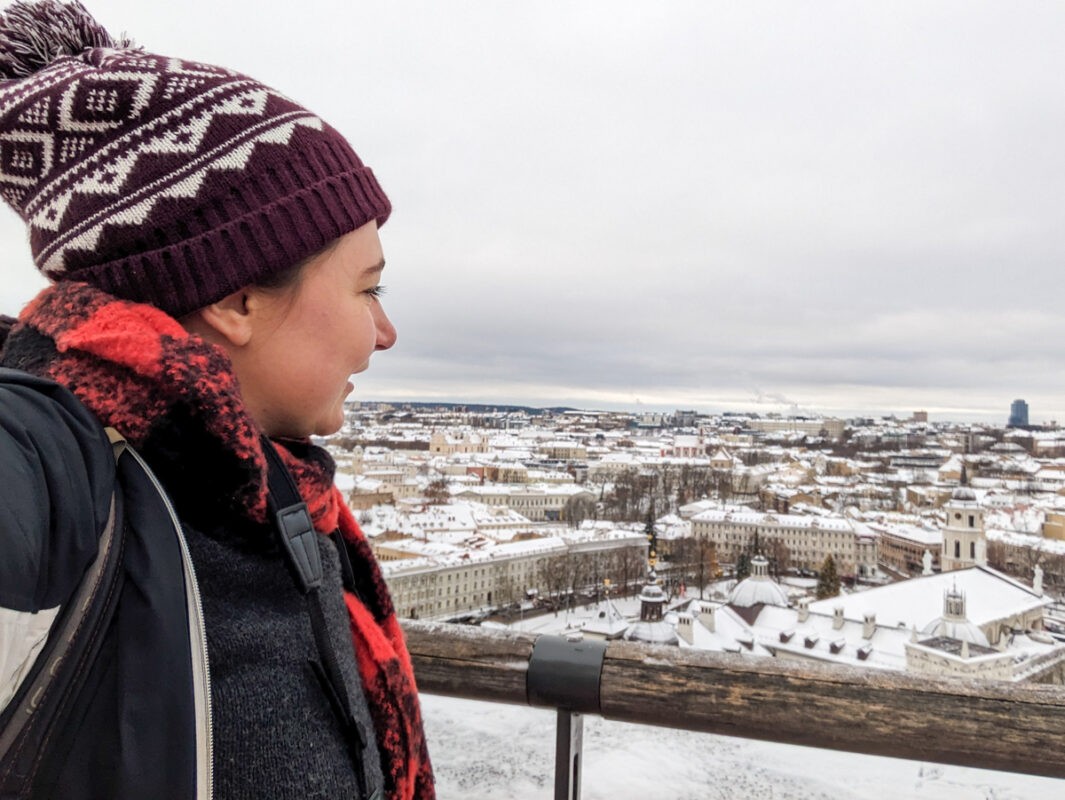
I felt like I got the most for my money in Vilnius. While Riga is also quite budget-friendly (Tallinn is more expensive), I felt like I got better deals in Vilnius.
Check out my guides to how much I spent in each Baltic capital:
I loved the hotel I stayed at (Urbihop Hotel), which was hip and modern and included an excellent breakfast, all for €48 per night.
I also thought skiing at Liepkalnis was an excellent deal, costing me just €33 for two hours ski rental and a lift pass.
Entrance costs for museums were similar to the other Baltic capitals, but I also found a good few free things to do, such as seeing the Franciszek Smuglewicz Hall at the Vilnius University Library, climbing to Gedaminas Castle Tower (entrance to the tower costs) and exploring the quirky neighbourhood of Uzipus.
Dining was generally cheaper – I spent about €10 on a sit-down lunch with a mulled wine and just under €20 on a huge bean stew, a plate of khinkali and a glass of wine at a Georgian restaurant.
Best history – Very close, but Tallinn
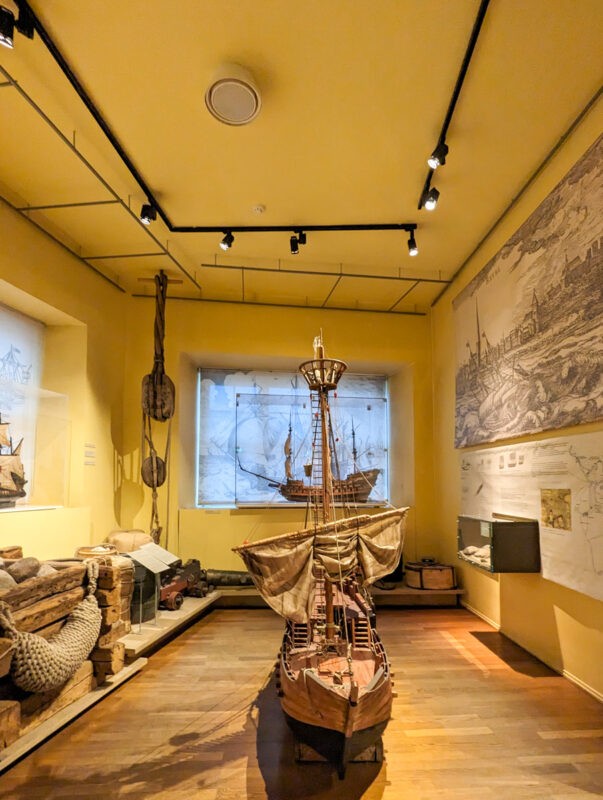
All of the Baltic capitals have a fascinating history; and while the modern history is quite similar (all three were part of the USSR and gained independence around the same time, following the incredible Baltic Way), they all have significantly different backstories post 20th century.
It’s a close call about which has the best history, but Tallinn would probably be my pick.
This Estonian capital’s historical narrative weaves through eras of Danish kings, Swedish rule, and Finnic influences.
Tallinn’s trading history stands as a testament to its strategic importance through the ages. As a vital member of the Hanseatic League, the city was a bustling hub of commerce and culture, a legacy still visible in its well-preserved Old Town.
The medieval buildings, ancient streets, and the remnants of the city’s fortifications paint a vivid picture of its past prosperity and significance.
The stories of Danish and Swedish influences in Tallinn add more layers.
These periods left indelible marks on the city’s architecture, language, and customs, contributing to the unique cultural blend that defines Tallinn today.
The Tall Hermann Tower and Toompea Castle stand as iconic symbols of these eras, each with a story to tell.
Moreover, Tallinn’s more recent history, particularly its journey towards modern independence, is equally fascinating.
While its 20th century history is hard-hitting and sad in parts – the country (like Latvia and Lithuania) was occupied by Russians, then Nazis, then it became part of the USSR before gaining independence – it’s also an inspiring story of resilience.
In more modern history, Tallinn dealt with heavy corruption after independence, but since the turn of the century it’s developed into a forward-thinking, technology-focused hub that’s loved by creatives, entrepreneurs and digital nomads.
Most to do – Vilnius

For me, Vilnius had the most to do.
The museums were excellent – I especially found the Museum of Occupation and Freedom Fights which is set in the historic KGB offices to be particularly interesting.
Art enthusiasts will find themselves lost in the contemporary exhibitions at the MO Museum or the National Gallery of Art. History buffs can delve into Lithuania’s past at the Gediminas Tower.
There’s even a Harry Potter-esque library to tour around at the university!
What truly sets Vilnius apart is its unique blend of urban and natural attractions.
A prime example is the Liepkalnis Ski Resort, a remarkable facility just 10 minutes from the city centre. Here, you can enjoy skiing or snowboarding with a picturesque view of the city skyline.
During warmer months, the resort’s a popular place for hiking.
There’s also plenty of craft breweries and an abundance of excellent restaurants back in the city.
Best architecture – Riga
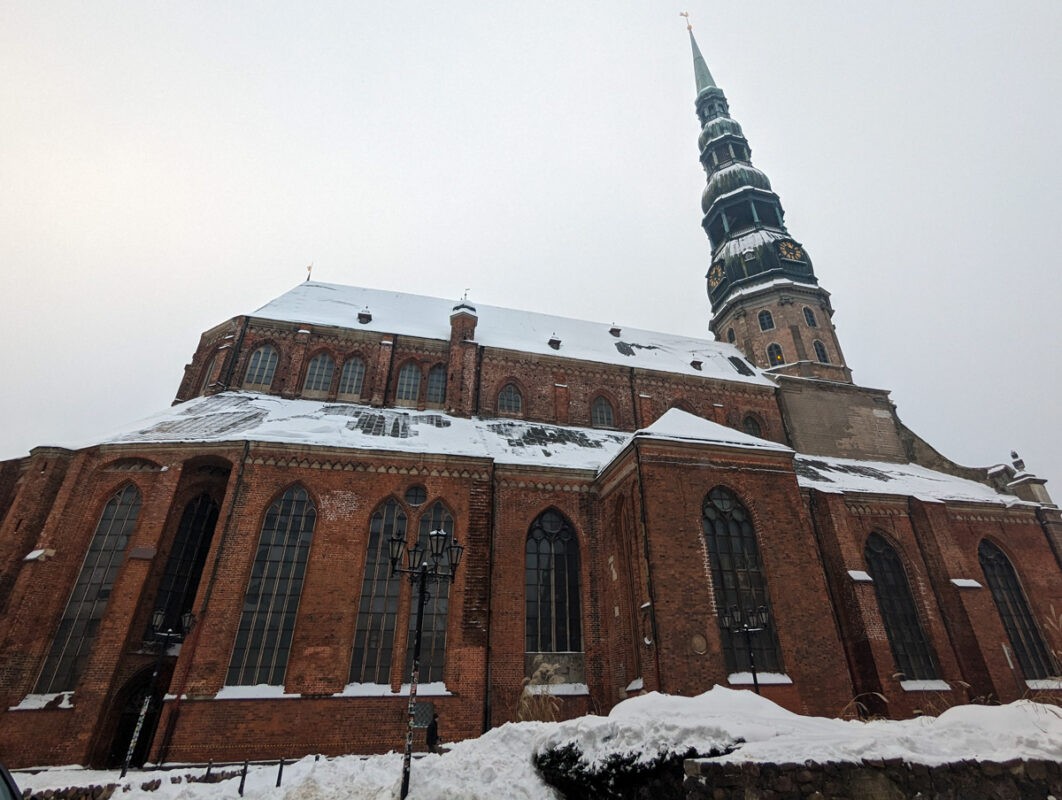
All three cities had fantastic architecture, but the diversity of Riga’s stood out for me.
This city’s virtually a living museum of architectural styles, each telling a story of different eras and influences.
The variety and density of architectural designs in Riga are unparalleled!
As you walk through the streets of Riga, you’ll be greeted by a stunning array of buildings that showcase a spectrum of styles.
The city is particularly famous for its Art Nouveau architecture, which is among the finest in Europe.
The elaborate facades, ornate decorations and whimsical figures of these buildings are a feast for the eyes.
Alberta and Elizabetes streets are prime spots for admiring these Art Nouveau masterpieces.
The city harmoniously blends medieval structures with modernist designs.
The Riga Cathedral and the House of the Blackheads reflect the city’s medieval heritage.
On the other hand, the National Library of Latvia and the Latvian National Opera represent the more modern architectural ambitions of the city.
My walking guide told me “Riga will never be finished, because we have a local legend that when it does, the city wall fall in the river. We don’t want that, so we keep building!”
Coldest in winter – Tallinn
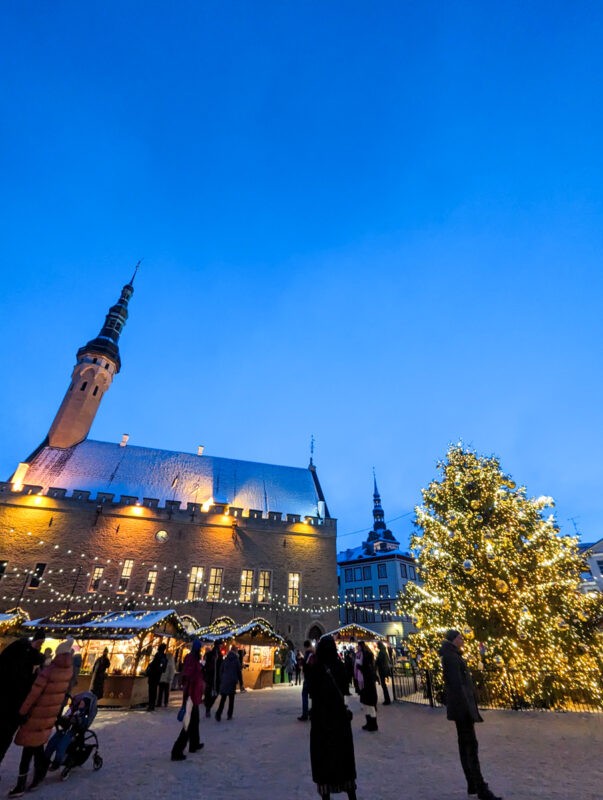
Tallinn was definitely the coldest when I visited. Temperatures plummeted down to -13C – and my guide told me it sometimes descends to -28C or lower!
This may be a good or bad thing, depending on how much you like the cold!
In the winter months, Tallinn transforms into a wonderland of snow and ice, with temperatures often dipping below freezing. If you’re visiting around Christmastime, like I was, it’s particularly festive and enchanting.
In fact, the medieval Old Town, covered in a blanket of snow, looks like it’s straight out of a fairytale.
Just make sure you wear waterproof boots, layer up and make plenty of stops inside!
In the summer, all capitals have similar temperatures, but Tallinn’s average is actually the warmest. However, it can vary day by day.
Best for beaches – Tallinn
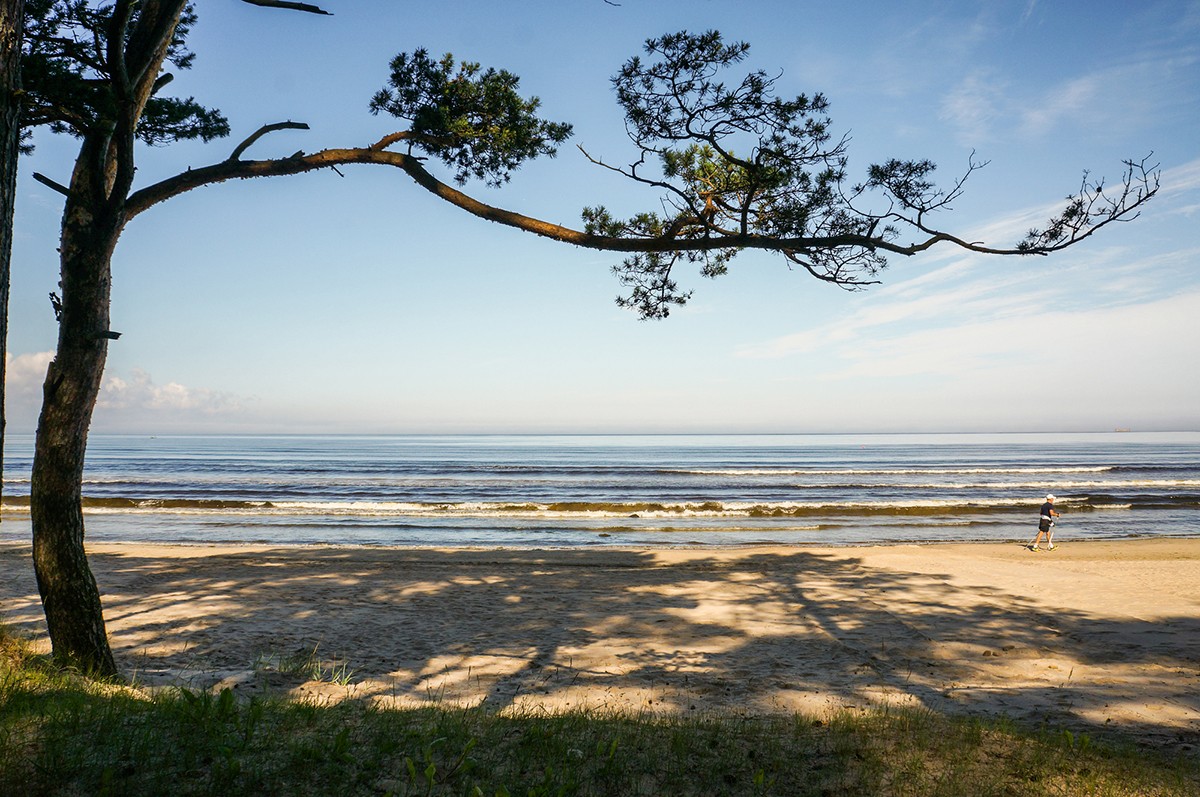
While the Baltics aren’t exactly popular as beach destinations, there are still quite a few in striking distance to Tallinn – in fact, you can walk to some of its beaches from the city centre!
So, if you’re visiting during the summer season and fancy a day at the beach, Tallinn wins.
- Pirita Beach is the largest and most popular in Tallinn. Just 6km/ 3.7 miles from teh city centre, Pirita is a broad expanse of sand, clear waters, and has a host of amenities.
- Another favourite is Stroomi Beach (5km/ 3 miles from the centre), a peaceful stretch of sand that contrasts with the busy city.
- Pikakari Beach, which is set on a peninsula (8km/ 5 miles from the centre) is a popular place for hiking and has excellent views over the Baltics.
There are a few beaches near Riga, but they’re not as accessible as Tallinn’s. Vilnius is far inland, away from the Lithuanian coastline, so it’s not one to visit for a beach break!
Best for digital nomads – Tallinn
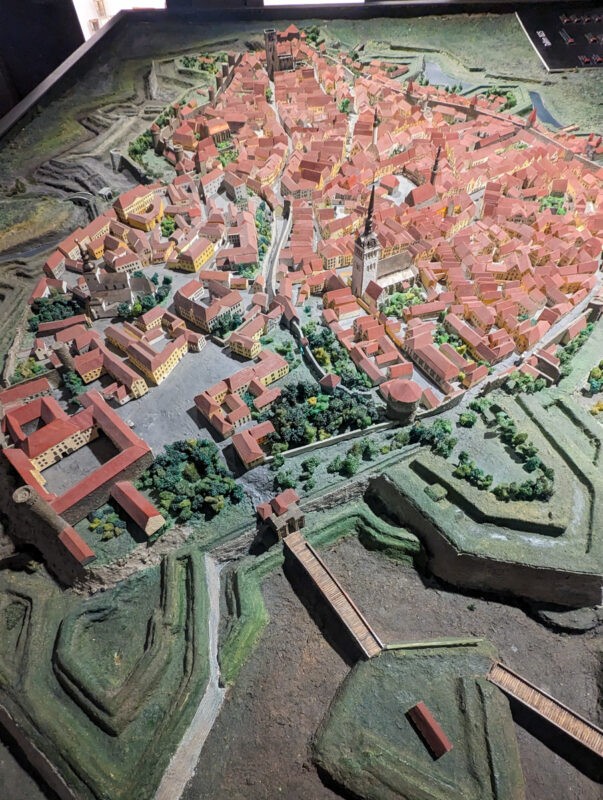
While Tallinn is the most expensive, it’s a great destination for digital nomads.
With a burgeoning reputation as a European tech hub, the city’s forward-thinking approach to technology and its welcoming attitude towards remote workers make it ideal for people working online.
One of the most progressive initiatives by Tallinn is the introduction of a digital nomad visa.
This visa acknowledges the evolving nature of work and the needs of modern-day professionals. It allows digital nomads from around the world to live and work in Tallinn legally, fostering a global community of remote workers.
The city’s technological infrastructure is another significant draw.
Tallinn boasts excellent WiFi speeds, a crucial factor for digital nomads whose work relies heavily on a reliable and fast internet connection.
This connectivity is complemented by the abundance of coworking spaces, especially in the creative quarter, Telliskivi.
Here, digital nomads can find a vibrant community and an inspiring work environment.
Estonia also has a popular start up scene – locals often say “if you don’t own a start up, are you even Estonian”?
This makes it one of the best places in Europe for any entrepreneurs to meet likeminded people and share ideas.
Best atmosphere – Vilnius

Atmosphere is hard to describe, but Vilnius stood out for me.
I loved how the city was centered around the bustling Cathedral Square, with the roads of the Old Town branching off it.
Cathedral Square was abuzz with activity; I visited when the Christmas Market was on, and the festive vibes felt strong.
In the summer, the square is often the venue for concerts, festivals and pop-up events.
I also loved the quieter districts of Uzipus (my guide told me that it’s much busier with creative types in the summertime) and the labyrinth of streets of the old city.
There’s a lively cafe culture, along with some excellent craft breweries.
I’m looking forward to returning for some of the city’s festivals as well!
My favourite – Vilnius
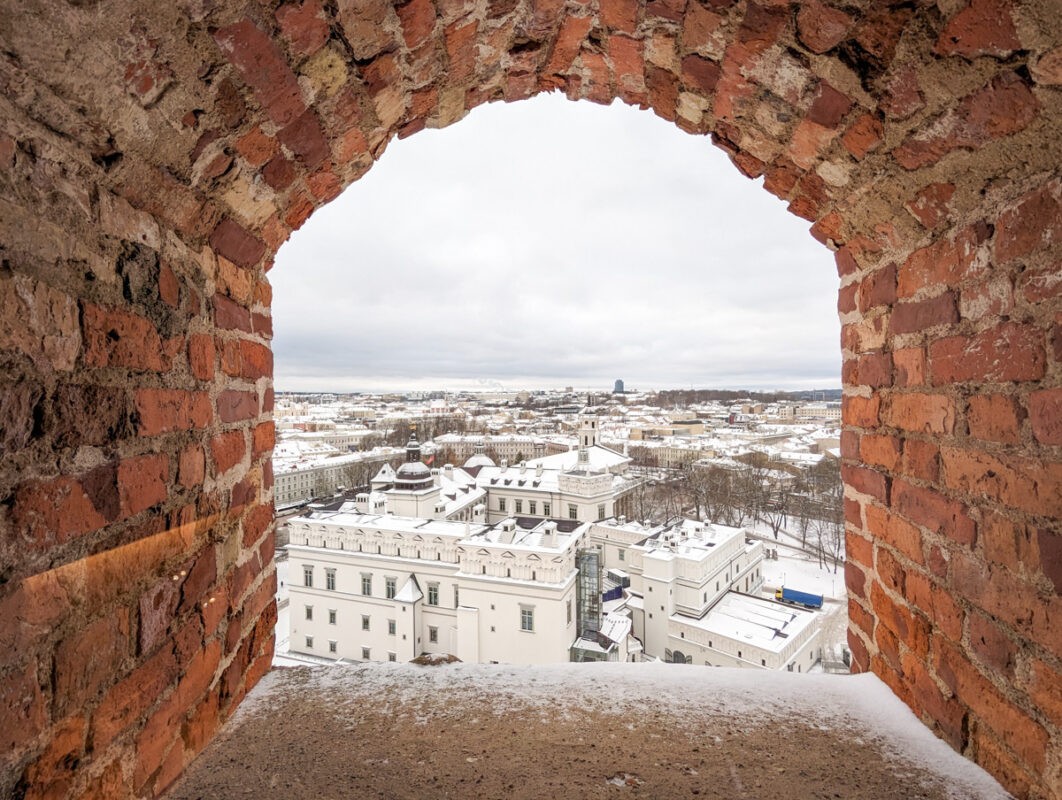
My favourite Baltic capital was Vilnius, due to the range of things to do and its buzzing atmosphere. It’s fun, safe and has lots to do.
However, as you can see in this post, all capitals have their draws.
I think that Tallinn is usually the most popular, and I can see why – it’s a digital nomad hotspot, has fascinating history and beaches – and it’s also extremely safe and welcoming.
Riga’s also well worth visiting for its history, architecture and Christmas market (and, like the other two, it has an excellent safety record and is an easy place to visit).
So, which Baltic capital is best to visit?
I’d recommend visiting all three if you have time, but if you don’t, it depends on your travel style.
Hopefully, this list has given you some idea about which city would suit you and your trip the best!
I’ve got lots of Baltic videos on my YouTube channel to help with any further decision-making!

